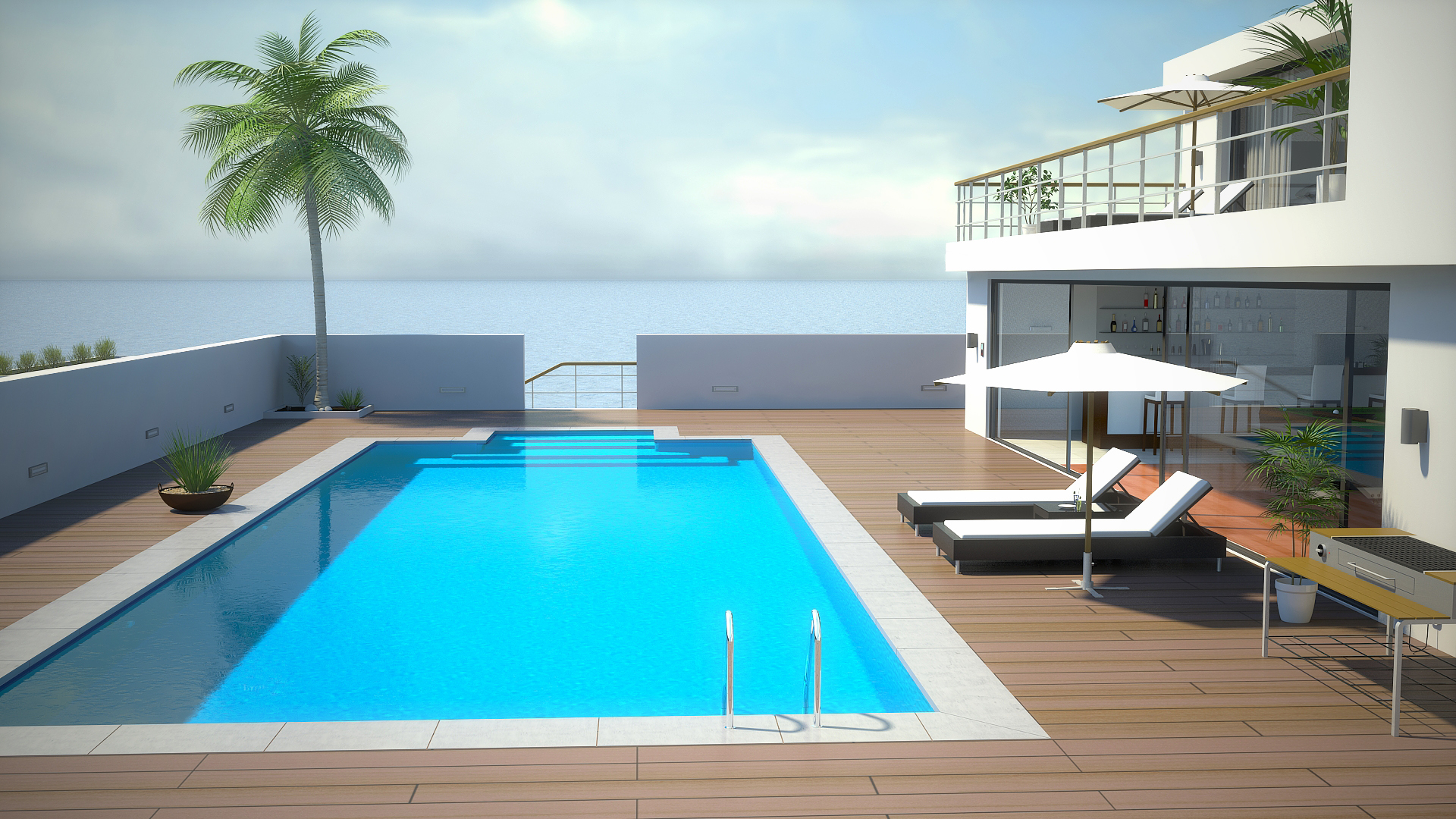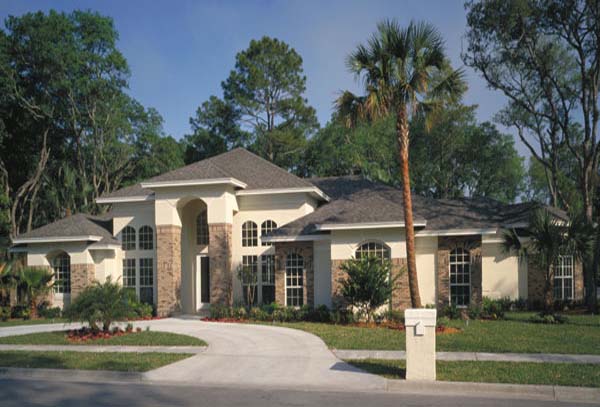Home > Famous houses in america > Monticello
Monticello

Monticello, located near Charlottesville, Virginia, is a historic plantation and iconic architectural masterpiece that was the primary residence of Thomas Jefferson, the third President of the United States. Designed by Jefferson himself, Monticello showcases his innovative ideas, intellectual pursuits, and unique architectural style. In this article, we will explore the history, significance, and notable features of Monticello.
I. Historical Background
Monticello is a historic plantation and neoclassical mansion located near Charlottesville, Virginia. It is best known as the primary residence of Thomas Jefferson, the third President of the United States and the principal author of the Declaration of Independence. Monticello holds significant historical and architectural importance and is considered a UNESCO World Heritage site. The history of Monticello dates back to 1768 when Thomas Jefferson inherited the land from his father. Over the next several decades, Jefferson gradually transformed the property into his ideal estate, incorporating his vision for architecture, agriculture, and intellectual pursuits.
Construction of the main house, also called Monticello, began in 1769 and continued for several years. Jefferson drew inspiration from various architectural styles, including Palladian and neoclassical designs, and incorporated unique features that reflected his personal tastes and ideas. The result was a remarkable blend of classical elements and innovative design. Monticello features a distinctive octagonal dome, which is considered one of its most iconic architectural elements. It serves both practical and symbolic purposes, providing natural light to the central hall while symbolizing enlightenment and progress. The house also boasts terraces, porticoes, and symmetrical wings, showcasing Jefferson's attention to detail and his fascination with classical architecture.
Beyond its architectural significance, Monticello served as a hub of intellectual activity. Jefferson used the house as a laboratory for his experiments in agriculture, horticulture, and natural sciences. He meticulously planned and cultivated extensive gardens, experimenting with different crops and plant varieties. Monticello also holds historical significance as the residence of Thomas Jefferson during his presidency and retirement. It was a place where he entertained numerous influential figures, including foreign diplomats, politicians, and intellectuals. The house witnessed important discussions and debates, shaping the course of American history.
After Jefferson's death in 1826, Monticello changed hands several times and fell into disrepair. However, efforts were made to preserve and restore the property in the late 19th century, and it eventually came under the stewardship of the Thomas Jefferson Foundation. Today, Monticello is open to the public as a museum and educational institution, offering visitors a glimpse into the life and legacy of Thomas Jefferson. The historical background of Monticello extends beyond its association with Thomas Jefferson. It represents a significant chapter in American history, reflecting the ideals of the Founding Fathers and their vision for a new nation. It serves as a testament to Jefferson's intellectual pursuits, architectural innovation, and dedication to agricultural and scientific advancements.
Monticello stands as a symbol of American democracy, enlightenment, and the enduring legacy of one of the nation's most influential figures. It continues to inspire visitors with its architectural beauty, historical significance, and the remarkable story of Thomas Jefferson's life and contributions to the United States.
II. Architectural Design
The architecture and design of Monticello, Thomas Jefferson's iconic residence, showcases his innovative ideas, eclectic influences, and meticulous attention to detail. Jefferson drew inspiration from various architectural styles, blending classical elements with his own unique vision. The result is a stunning example of neoclassical architecture with distinct features that set Monticello apart. The main house at Monticello exhibits a unique and recognizable design. It features a two-story central block with a symmetrical arrangement of rooms and a prominent portico supported by tall Ionic columns. The exterior is made of locally sourced Virginia sandstone, giving the house a warm and natural appearance.
One of the most distinctive architectural elements of Monticello is its octagonal dome. Situated at the top of the house, the dome provides natural light to the central hall and adds a sense of grandeur to the structure. The dome's design draws inspiration from classical architecture and showcases Jefferson's interest in incorporating innovative and unconventional elements. The interior of Monticello is equally impressive, reflecting Jefferson's meticulous planning and attention to detail. The central hall serves as the focal point of the house, with rooms radiating off from it. The main rooms, such as the parlor, dining room, and library, are carefully proportioned and feature ornate details, including decorative moldings and elegant finishes.
Jefferson's personal quarters on the second floor are equally notable. The bedrooms and private study showcase his preference for simplicity and functionality. He incorporated unique features such as a rotating bookstand and a bed recessed into an alcove, which provided privacy and convenience. The gardens and landscaping surrounding Monticello were also an integral part of Jefferson's design. He meticulously planned and cultivated expansive gardens, experimenting with various crops, ornamental plants, and garden designs. The gardens showcase Jefferson's passion for horticulture and his interest in scientific agriculture.
In addition to the main house, Monticello encompasses other architectural features and outbuildings. The South Wing, added later in Jefferson's life, includes a private suite of rooms and a terrace with breathtaking views. The North Wing houses a kitchen, storerooms, and servant quarters, reflecting the functional aspects of daily life at Monticello. Monticello's architectural design also extends beyond the main house. Jefferson developed a series of dependencies, including a smokehouse, icehouse, and wine cellar, which were meticulously planned to provide self-sufficiency and convenience to the household.
Overall, the architecture and designs of Monticello represent a unique blend of classical influences, innovative elements, and Jefferson's own personal tastes. The attention to detail, the incorporation of natural light, and the seamless integration of indoor and outdoor spaces make Monticello a masterpiece of neoclassical architecture. Its enduring beauty and historical significance continue to captivate visitors, offering a glimpse into the extraordinary mind of Thomas Jefferson and his contributions to American architecture and design.
III. Gardens and Landscape
The gardens and landscape of Monticello are an integral part of Thomas Jefferson's vision and reflect his passion for horticulture, experimentation, and the beauty of nature. Jefferson saw his gardens as a living laboratory, where he could cultivate a wide variety of plants, explore agricultural practices, and indulge his love for botany. Situated on a hilltop, Monticello's gardens are meticulously planned and offer breathtaking views of the surrounding Virginia landscape. The gardens encompass a range of features, each serving a specific purpose and showcasing Jefferson's diverse interests. The Vegetable Garden at Monticello is one of the most notable aspects of the landscape. It covers approximately one thousand feet and is divided into rectangular beds, each dedicated to a specific crop. Jefferson meticulously recorded his gardening activities, noting planting and harvesting dates, yields, and observations on different plant varieties. The Vegetable Garden showcases Jefferson's commitment to agricultural innovation and experimentation.
The Fruit Garden is another prominent feature of Monticello's landscape. It is filled with a variety of fruit trees, including apples, pears, peaches, cherries, and grapes. Jefferson sought to grow a wide range of fruit species and introduced several new varieties to the United States. He used techniques such as grafting and espalier to maximize productivity and create beautiful, organized rows of fruit trees. Jefferson's interest in ornamental plants is evident in the Flower Gardens of Monticello. He cultivated an extensive collection of flowers, including roses, lilies, tulips, and perennials. The Flower Gardens were meticulously designed to provide visual interest, with carefully planned color combinations and seasonal blooms. Jefferson believed that flowers enhanced the beauty of the landscape and brought joy to the inhabitants of Monticello.
The Landscape Gardens surrounding the house were designed to create a harmonious connection between the natural environment and the built structures. Jefferson incorporated features such as serpentine paths, terraces, and hidden alcoves to create a sense of discovery and tranquility. The use of native plants and strategic placement of trees and shrubs added depth and texture to the landscape. Water played an important role in the gardens of Monticello. The West Lawn features a reflecting pool known as the Oval Garden, which reflects the grandeur of the house. The South Orchard contains a fish pond, where Jefferson experimented with fish farming. The presence of water features added both aesthetic appeal and practical functionality to the gardens.
In addition to the gardens, Monticello's landscape includes various outbuildings and structures that contribute to the overall design. The Mulberry Row, located near the main house, housed workshops, kitchens, and living quarters for enslaved individuals who played a vital role in the functioning of Monticello. The integration of these structures into the landscape reflects Jefferson's desire for a self-sustaining and efficient estate. The gardens and landscape of Monticello not only served as a source of beauty and inspiration but also provided sustenance, knowledge, and a platform for experimentation. They were an essential part of Jefferson's vision for a harmonious and productive living environment. Today, the gardens continue to be meticulously maintained, allowing visitors to experience the serenity and horticultural legacy of Monticello.
IV. Significance and Legacy:
Monticello is not only a masterpiece of architecture but also a symbol of Thomas Jefferson's ideals and contributions. It served as a private retreat, a gathering place for intellectual discussions, and a showcase of Jefferson's diverse interests. Monticello represents Jefferson's commitment to individual liberty, education, scientific progress, and cultural enlightenment.
V. Preservation and Public Access
In 1923, Monticello was purchased by the Thomas Jefferson Foundation and opened to the public as a historic site and museum. The Foundation continues to preserve and maintain Monticello, offering guided tours, educational programs, and exhibits that explore Jefferson's life, achievements, and the complex history of the plantation.
In conclusion, Monticello stands as a remarkable testament to Thomas Jefferson's architectural genius, intellectual pursuits, and contributions to American history. Its innovative design, blending classical elements with Jefferson's own ideas, continues to inspire and captivate visitors from around the world. As a symbol of Jefferson's legacy, Monticello preserves his values of enlightenment, exploration, and the pursuit of knowledge, ensuring that future generations can appreciate and learn from the life and accomplishments of one of America's most influential figures.









